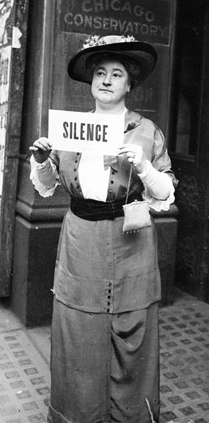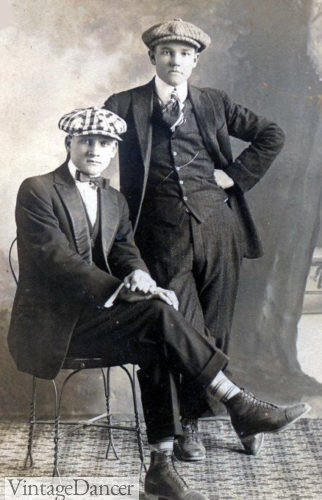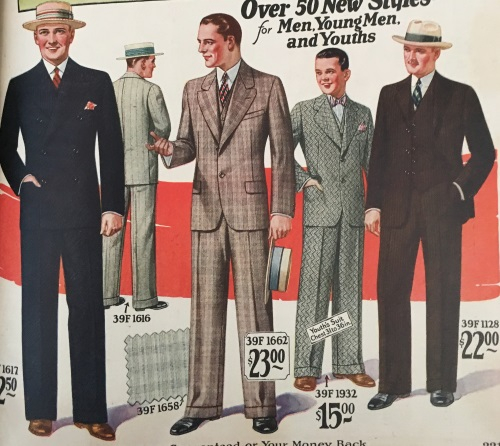
Giant Edwardian hats and formality are a thing of the past.
It may have only been a year or two on the calendar, but the lifestyle of the Roaring 20s was lightyears away from the World War I era. Along with the change in culture, customs, and entertainment came a time of unbridled optimism. Money was spent freely thanks to the new concept of buying on credit. In America, women had been granted the right to vote in 1920 and could be seen heading off to jobs or college campuses in record numbers. Jazz music swept the nation and sparked new dance crazes like the Charleston and the Shimmy. And Prohibition? Forget about it! Alcohol flowed more freely than before the federal ban as men and women alike packed into speakeasies or made their own moonshine in homemade stills. The 1920s was a time of tremendous change and in the midst of it all was the change in fashion.

1914- Silent no more. Women won the right to vote in 1920
Before the 1920s, women were confined to floor-length dresses with cinched waists pulled tight by corsets. Long sleeves kept bare skin hidden from sight. Hair was long and hats were often so ornate large that it is a wonder that any woman could keep her head from tilting to one side. For men, pants were creased and ties were not optional. A gentleman walking through the streets with short sleeves or without a coat and a vest may as well have been walking through the streets in his underwear.

The Roaring 20s brought an end to all of that, at least for the younger crowd. Inspired both by the modern art of the era as well as new roles for women in society, women embraced clothing that allowed them to move. Two-piece sweater and skirt outfits reflected the needs of the active modern woman. Skirts were shorter and featured slits or pleats. Dresses had low waists and were full at the hemline. After all, who could do the Charleston in a full-length gown and corset? And, just as scandalous as it was to show bare arms and legs, the short bobbed haircuts that women sported were equally shocking.

1927 wide suits, dramatic colors
Men’s fashion underwent a shift, too. Gone was the stuffy formal attire and in came suits with more color. Patterned socks served as accents. Casual and laid-back was the rule as even ties were no longer a given. Close-cropped, slicked-back hair was all the rage. A hot summer day might find a man wearing a Panama hat or a straw Boater with a linen suit or sweater vest for a game of tennis.
One of the most iconic writers of the Jazz Age, F. Scott Fitzgerald, said, “There are no second acts in American lives” and the era certainly reflected that belief. The Great Depression may have been looming up ahead, but nobody knew about that in the 1920s. It was time to have fun and break old boundaries and for the people of the 1920s, they were ready to dress the part.
Continue reading 1920s fashion history for women and men.
___________________________________________________________________________
Recommended Reading:
The Modern Temper: American Culture and Society in the 1920s
Debbie Sessions has been teaching fashion history and helping people dress for vintage themed events since 2009. She has turned a hobby into VintageDancer.com with hundreds of well researched articles and hand picked links to vintage inspired clothing online. She aims to make dressing accurately (or not) an affordable option for all. Oh, and she dances too.
